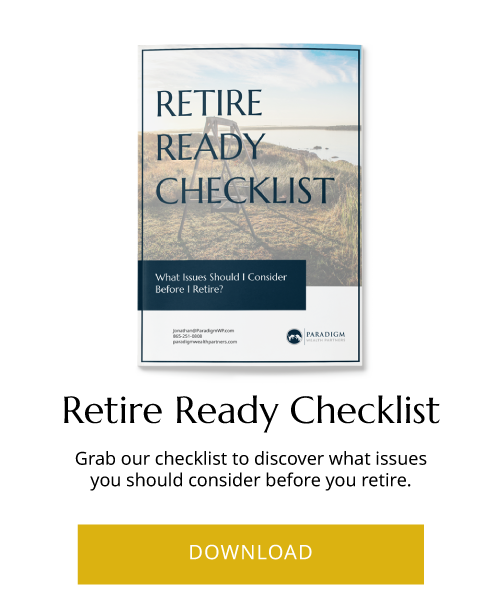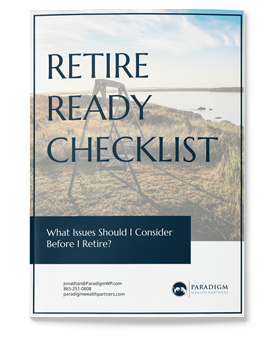Retirement Plans: Mega Backdoor Roth
We all understand the importance of investing in tax-advantaged retirement accounts. These accounts provide a significant stream of our retirement income. However, retirement accounts have income and contribution limits. These can determine account eligibility and the amount of money we can contribute each year. What if there was a way around some of these limitations? The mega backdoor Roth strategy is a workaround that can help supercharge your retirement savings.
What is a Mega Backdoor Roth?
A mega backdoor Roth is a strategy that enables those who earn too much money get around the income restrictions (allowing them to make contributions to a Roth account).
Roth IRA
Contributions to a Roth IRA are after-tax, as opposed to pre-tax (which is the case with a traditional IRA). Roth contributions grow tax-free. You can withdraw the money tax-free during your retirement. Most people are in a lower tax bracket in retirement than they were during their working years. Additionally, Roth IRAs are not subject to required minimum distributions (RMD); which makes them a great tool for estate planning.
Roth IRA contributions are dependent on your income. If you earn too much, you cannot contribute to a Roth IRA. For 2020, if you file as a single person, your Modified Adjusted Gross Income (MAGI) must be less than $139,000. For those who file jointly, MAGI must be less than $206,000.
Backdoor Roth
The backdoor Roth helps high earners escape income limits so they can contribute to a Roth IRA. It entails making an after-tax contribution to a traditional IRA and then converting some (or all) that money to a Roth IRA.
The conversion may or may not be taxable, all or partly depending on the mix of pre-tax and post-tax dollars in the account. Annual IRA contributions for 2020 are $6,000 (and an additional $1,000 for those over the age of 50).
The mega backdoor Roth allows some investors to contribute as much as $37,500 extra (for 2020) to a Roth IRA. This happens via their employer’s 401k plan if the plan allows after-tax contributions over and above the limit on employee contributions. For 2020, those limits are $19,500 and an additional $6,500 for those over the age of 50.
How the Mega Backdoor Roth Works
It will not work for everyone. To accomplish an MBR, your employer’s 401(k) plan has to have these attributes:
- Allows you to make after-tax contributions
- Allows for in-service withdrawals
After-Tax Contributions
If your employer’s plan does allow for after-tax contributions, they would be over and above the employee deferral limits. For 2020, the limits are $57,000 and an additional $6,500 for those over age 50. This means that the maximum allowed for after-tax contributions is $37,500. If your employer’s plan offers to match, your maximum after-tax contribution will be reduced by the amount of the match.
In-Service Withdrawals
The MBR works best if your employer’s plan offers in-service withdrawals with no restrictions. This allows you to roll over your balance or withdraw some of the balance while still employed by the company.
If the plan allows for both after-tax contribution and in-service withdrawals, these are the steps you will need to follow:
- Determine the maximum amount of after-tax contributions you can make.
- Ensure those contributions are made to a traditional account on an after-tax basis, not to a Roth 401(k) option within the plan.
- Once you have made the maximum after-tax contribution, withdraw that amount as a rollover/conversion to a Roth IRA account. This conversion will not be taxable unless there are earnings on the amount. These earnings are considered pre-tax and subject to taxation.
Regrettably, there are not many plans that offer both the ability to make after-tax contributions and take early withdrawals. There are some plans that allow in-service withdrawals for employees of a certain age, typically 55 or 59.5. This can be a virtuous alternative, even though the earnings on the after-tax contributions may add up (depending on how long you have been making after-tax contributions).
If your plan does not allow for in-service withdrawals, you can allow after-tax contributions to grow until you leave your place of employment. The earnings from these contributions may add up to a significant amount, adding to the taxable portion upon rollover/conversion to a Roth IRA.
Another alternative for plans that do not allow in-service withdrawals is an in-plan conversion to a Roth 401(k) account (if your plan has this option). The plan would have to offer a conversion option as well. A Roth 401(k) has most of the advantages that a Roth IRA. However, be sure to roll this portion of your 401(k) over to a Roth when leaving your job. For those who are self-employed and contribute to a solo 401(k), you may be able to do this depending on your plan’s rules. Most standard custodians might not allow for these additional after-tax contributions, but a self-directed IRA custodian might allow it.
Is the Mega Backdoor Roth Right for You?
Unfortunately, the option of an MBR is not available for everyone. There plenty of criteria that must be met to follow this strategy. If you can meet those criteria, it is a great way to ramp up your retirement savings. If you have questions about this, please reach out.
Information in this material is for general information only and not intended as investment, tax or legal advice. Please consult the appropriate professionals for specific information regarding your individual situation prior to making any financial decision.
A Roth IRA offers tax deferral on any earnings in the account. Qualified withdrawals of earnings from the account are tax-free. Withdrawals of earnings prior to age 59 ½ or prior to the account being opened for 5 years, whichever is later, may result in a 10% IRS penalty tax. Limitations and restrictions may apply.
No strategy assures success or protects against loss. Investing involves risk including loss of principal.



